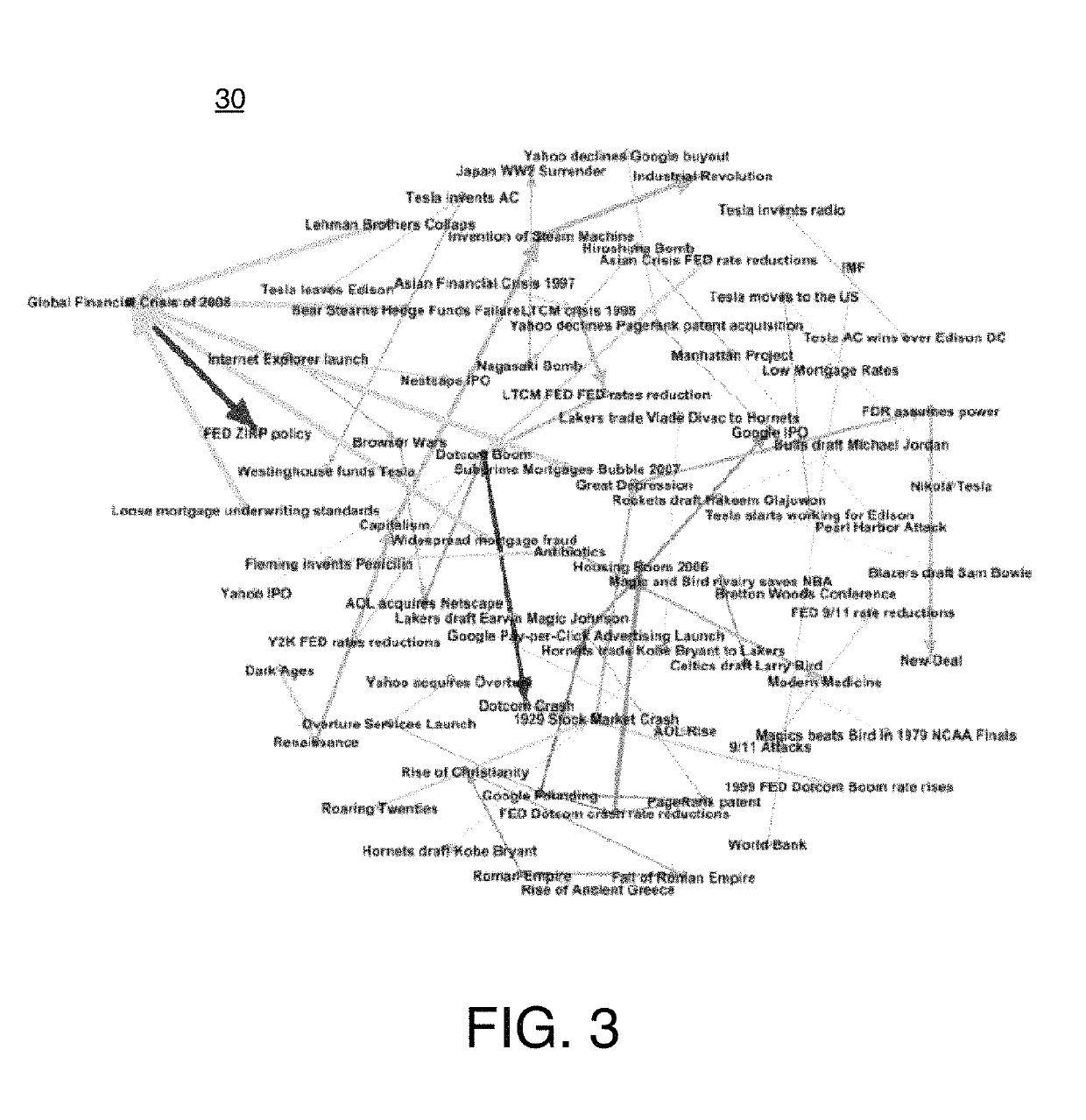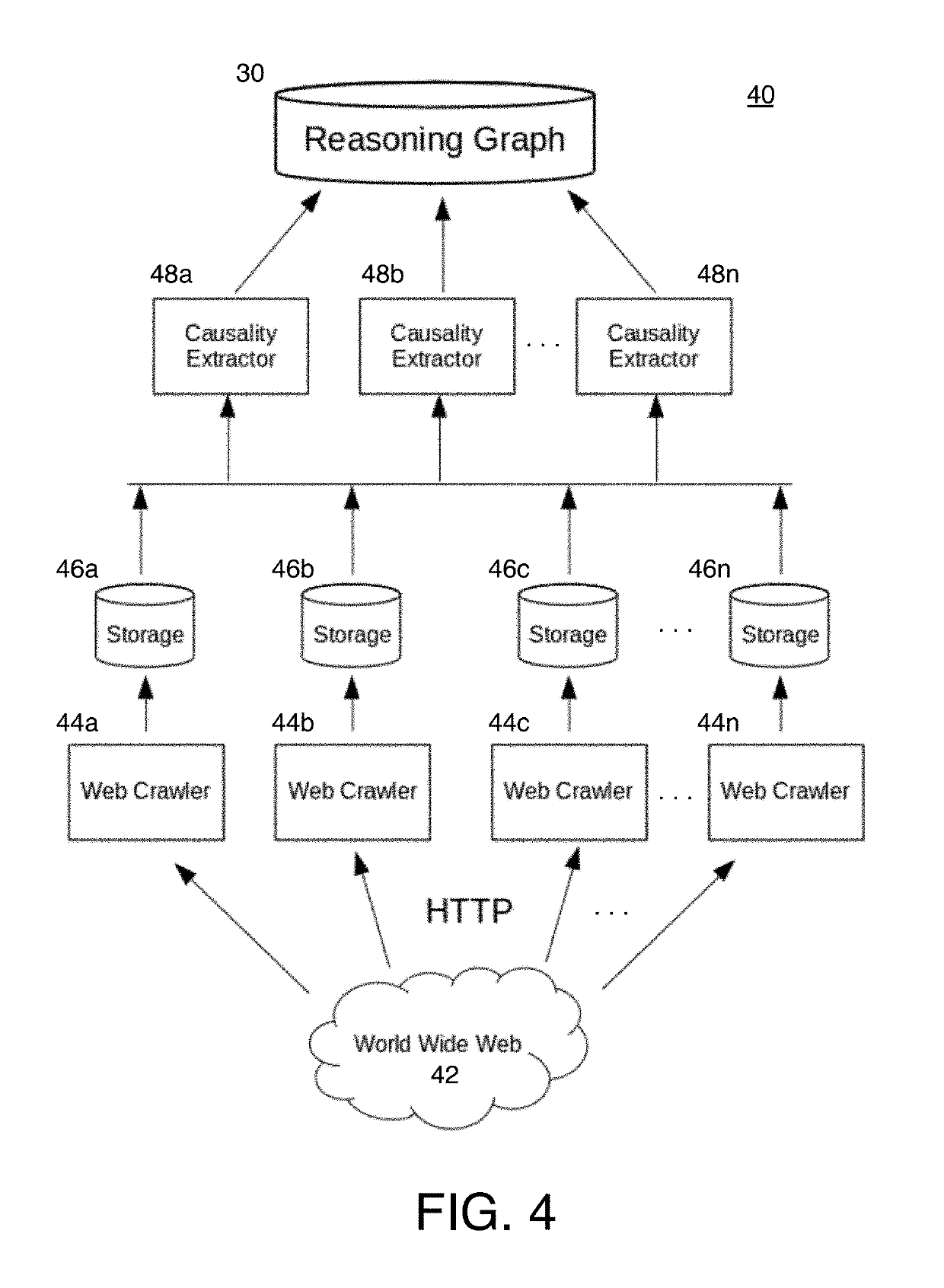System for creating a reasoning graph and for ranking of its nodes
a graph and reasoning technology, applied in the field of systems and methods for creating a reasoning graph, can solve the problems of unsatisfactory ai, enormous difficulty in machine implementation of natural language processing, and difficulty in programming such algorithms to mimic human cognitive functions
- Summary
- Abstract
- Description
- Claims
- Application Information
AI Technical Summary
Benefits of technology
Problems solved by technology
Method used
Image
Examples
Embodiment Construction
[0025]In graph theory, a directed graph is a graph, or set of vertices or nodes, connected by arcs or edges, where the edges have a direction associated with them. Graphs are used in mathematics and computer science to model pairwise relationships between objects. Described herein is a form of directed graph, referred to as the Reasoning Graph, consisting of nodes defined by causes and effects, together with systems for creating said Reasoning Graph and methods for ranking its nodes. The Reasoning Graph of the present invention is a directed graph of significant scale, comprising, in some instances, billions, and even trillions, of nodes and edges. This scale is a result of crawling vast repositories of information, such as the World Wide Web, and extracting information therefrom. The present inventor's efforts to date indicate that approximately 0.5-2% of pages crawled yield causality relationships for inclusion in the Reasoning Graph. For a corpus of 60 trillion Web pages (the est...
PUM
 Login to View More
Login to View More Abstract
Description
Claims
Application Information
 Login to View More
Login to View More - R&D
- Intellectual Property
- Life Sciences
- Materials
- Tech Scout
- Unparalleled Data Quality
- Higher Quality Content
- 60% Fewer Hallucinations
Browse by: Latest US Patents, China's latest patents, Technical Efficacy Thesaurus, Application Domain, Technology Topic, Popular Technical Reports.
© 2025 PatSnap. All rights reserved.Legal|Privacy policy|Modern Slavery Act Transparency Statement|Sitemap|About US| Contact US: help@patsnap.com



